How a remote California tribe set out to save its river and stop a suicide epidemic
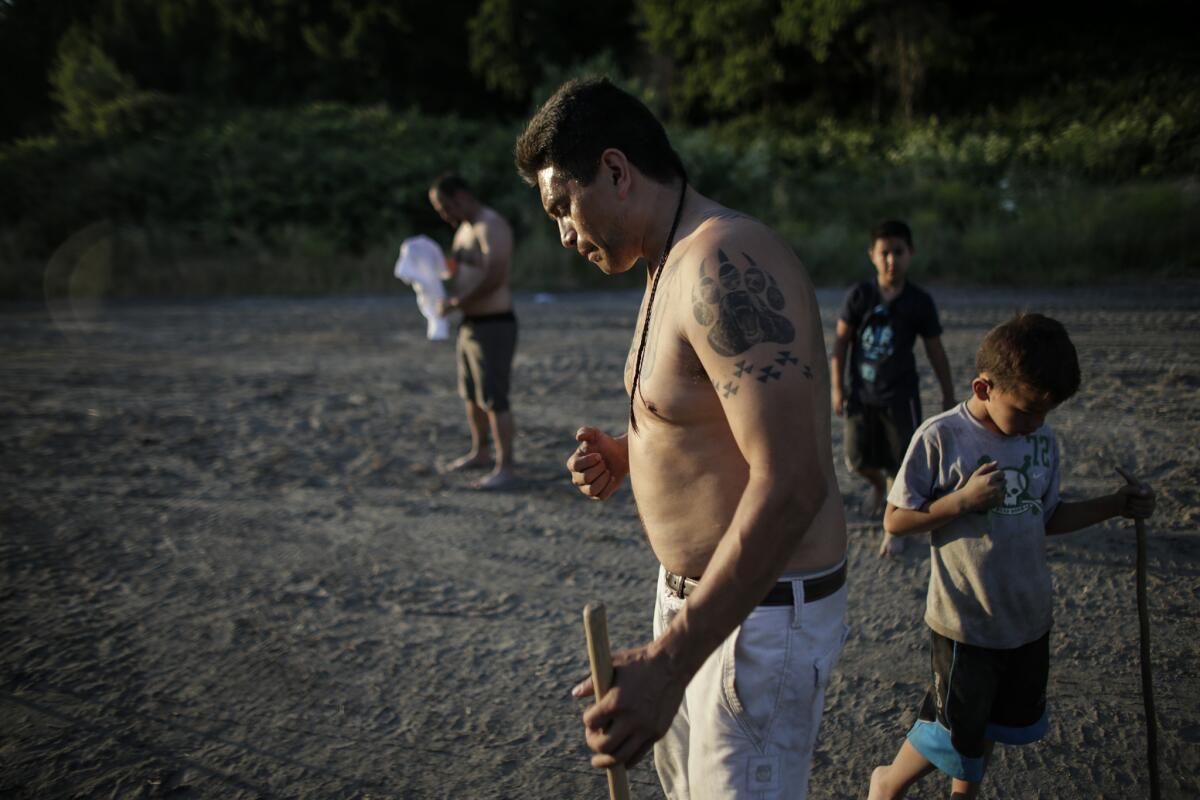
The Yurok people live in a stark land of salmon runs and steep, misty mountains, where giant salamanders hide under rotting logs and Bigfoot is said to prey after dusk.
Deep in California’s coastal woods near the Oregon border, the reservation straddles the mighty Klamath River, the tribe’s lifeblood for centuries.
But over the last 50 years, the yearly migration of salmon from the Pacific dwindled, and poverty, addiction and lawlessness gripped the reservation.
Last year, a rash of suicides pushed the tribe, California’s largest and one of its poorest, into an existential crisis.
Seven Yurok had killed themselves during an 18-month span. Four died in a neighborhood of just 15 homes, and one shot himself in the home where another man had died the same way six years before.
The deaths drove the suicide rate on the reservation of 3,000 people to nearly 14 times the national average.
But as the Yurok quietly buried the dead, a grieving father decided he could no longer watch helplessly. A mother joined him, then an aunt. They rounded up others to figure out how they could halt this grim call to the grave.
“There’s no reason to it,” said the father, Dan French, who lost his son. “And there’s a hundred reasons.”
It would be a vastly complex task to slow the spiral of joblessness, broken families and addiction, intertwined as it was with the long demise of the river that once sustained everyone here.
But first they needed to break an ancient taboo: They needed to talk openly about how their loved ones died.
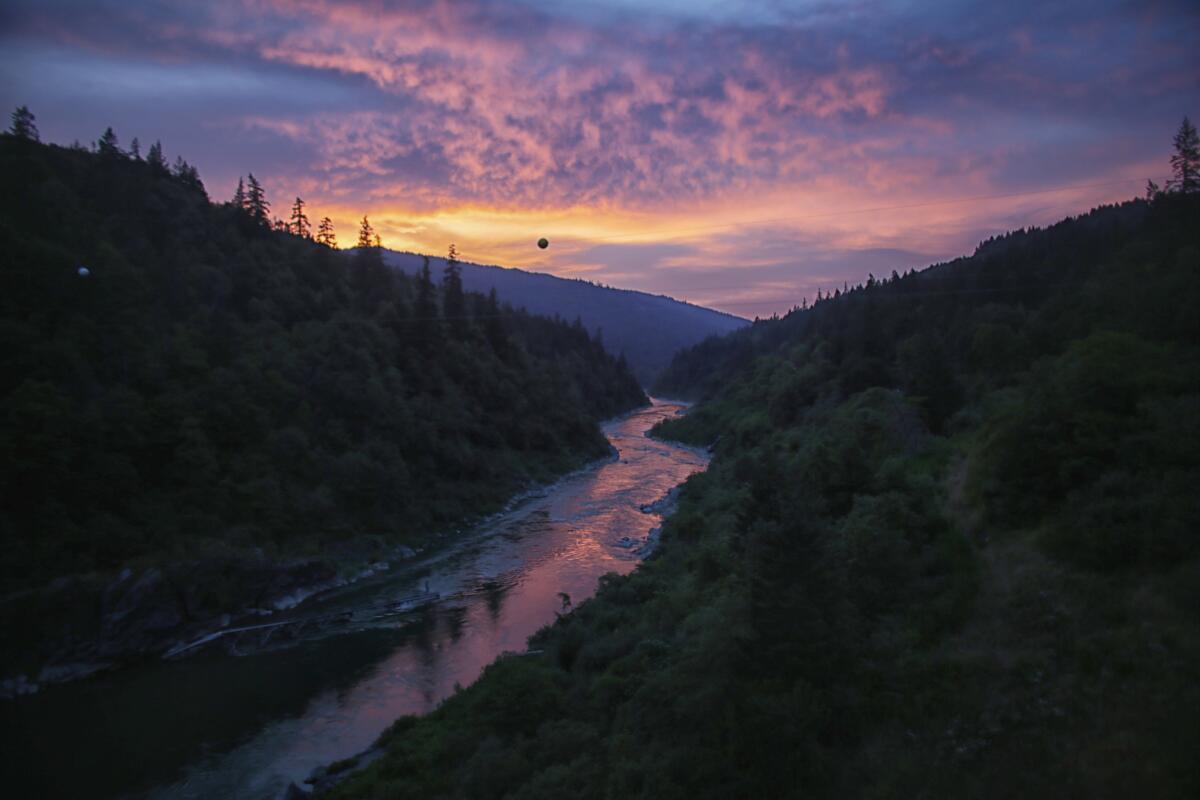
Derek Howerton, 16, was the first.
He and his brothers lived with their dying mom at the end of a dirt road in the woods, on a clearing scattered with beer cans, bullet casings and the scavenged remains of old cars and trucks.
Their home life was a mire of drugs and alcohol.
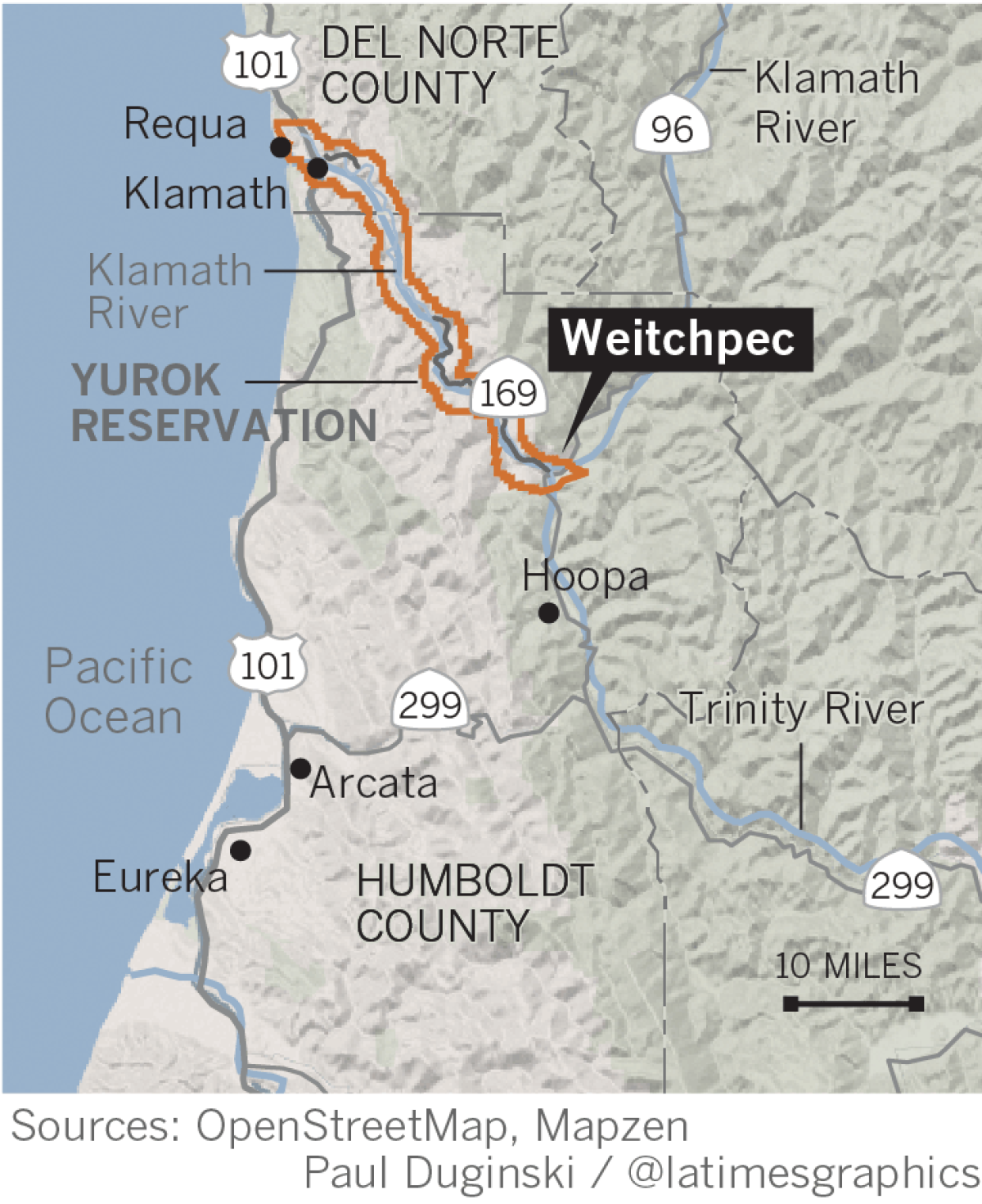
In the summers, Derek and his brother Donald used to find refuge at Nick and Barbara McCovey’s house on a bend downriver, where the couple set up a makeshift camp on the gravel bar for the neglected children of neighbors.
The children would clean and set gill nets, play in the swimming holes, catch king snakes, wrestle, plant trees in the orchard. On special nights, the McCoveys fired up the generator and played a movie on VHS. One year, 28 kids — about half the children in the area — came to stay for the summer.
By 2014 those days were long gone for Derek. At 16, he was on probation for drunk driving, vehicle theft and hitting a teacher. He also was in a volatile relationship with Kerrie Mellon, a woman twice his age.
Mellon had grown up hard too. Her life had imploded eight years before, when her husband shot himself in the head on the riverbank. She lost custody of her three children and had been reeling ever since.
Derek, with a rakish mop of curly black hair and wispy new mustache, had been dating her for three months. His mom objected, but no one thought of alerting the police to a grown woman dating a high school sophomore — those were matters kept between families.
On a warm Saturday, they fought. Mellon was trying to make a phone call and Derek, suspecting her of cheating on him, cut the phone line. She scratched at his face and left him with a black eye.
Around 11 that night Derek arrived at his older brother David’s trailer to do shots of vodka. David had already downed a half gallon, and Derek was drunk and high on meth.
Mellon knocked on the door and Derek stepped outside to see her. After a few grumbled words, he pulled out a 9-millimeter Glock and shot himself in the temple.
Mellon quietly grabbed the gun and pointed it at the base of her own skull, firing a second fatal shot.
A week later, on the shoal where he used to hold his makeshift summer camps, Nick McCovey yanked the cord of his Yamaha 90 outboard, and his co-worker Damien French pushed them off. As the motor sputtered to life, McCovey, 47, punched the throttle and headed upstream to see who had put their nets out for the fall Chinook salmon run.
Normally it was McCovey who held court, with torrents of F-bombs and a mischievous glint in his eye. Nothing satisfied him more than making someone laugh, and no one obliged him more than French. They loved fishing and bragging about who caught what.
WATCH | Grief and guilt: Voices of family and friends »
But this time it was French who did the talking. His eight-year marriage had begun to fall apart, his wife had left him. Just 29, he was raising his three stepdaughters by himself. They loved him and called him “Daddy,” but he was depressed and had started drinking.
McCovey listened to French as their boat yawed around bends, over riffles and boils, worried about his friend.
Just a couple years ago, Yurok families would live on the river bar for weeks at a time, bringing in salmon from ancestral holes passed down for centuries. But that afternoon, the river bars were mostly empty, the water algal green. Tribal leaders had let commercial fishermen take most of the fish at the mouth of the river, 20 miles downstream.
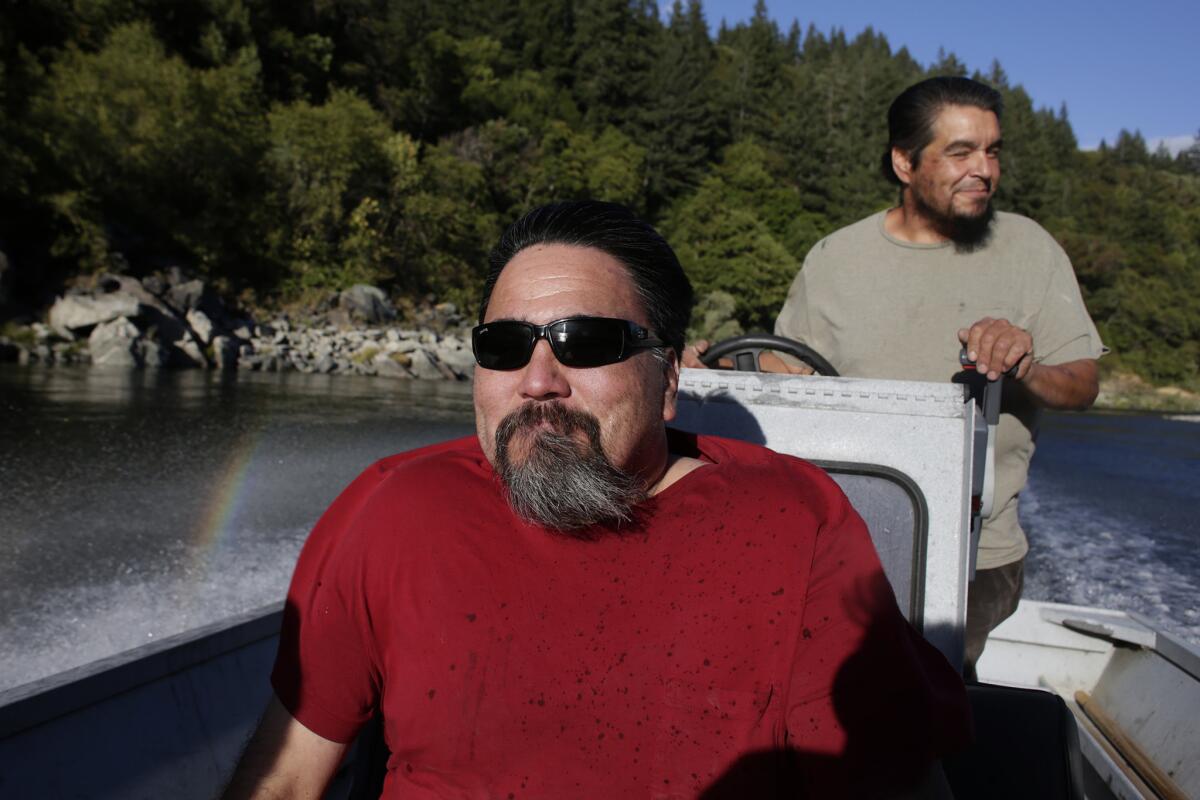
With no salmon, and an unemployment rate above 80% around Weitchpec, McCovey knew video games, alcohol and drugs filled the void. Heroin and meth had swept into the areas electricity and phone service had not touched.
Nearly every man of McCovey’s age had either survived a rough bout with substance abuse or was still using. French, who loved to hunt and fish, seemed to be falling into the same trap.
They returned to the beach and tied up the boat. McCovey invited French to stay for dinner, but he said no.
A week later the tribe shut down all fishing around Weitchpec and halted their fish-counting jobs for the season. French spiraled over the next seven months. In hindsight, McCovey wishes he had invited him out on the water, just to talk.
On the night of May 22, 2015, at a little yellow house rented from the tribe, French downed a pint of Sailor Jerry’s rum, fought with his mother, walked to the bathroom, shut the door, and shot himself in the head.
French’s neighbor, Frankie Joe Myers, had spent the last decade fighting to save the river and help the people who lived off of it. When the suicides began, Myers recalled a story his Yurok grandmother told him.
The river spirit, Rec-wa, woke his great-great aunt one night to show her the entire river, from the mouth to the headwaters, teeming with eel and otters and fish.
Then the fish and eels started disappearing, the otters left — until there was nothing.
“Why did you show me this?” she asked.
“If you don’t take care of the river and there are no fish,” the spirit said, “there is no reason for your people to live on this Earth.”
Back then, the fish still migrated up the Klamath in great pulses of copper, silver and red. Some days it looked as if the river were running in reverse.
For hundreds of years, the Yurok survived off Chinook and coho salmon, steelhead and cutthroat trout, green sturgeon, candlefish and eel-like Pacific lampreys. They traded with other tribes, traveling miles in giant redwood canoes, riding the currents down and using the eddies and afternoon wind to get back upriver.
They lived like that, all but untouched, for centuries, until Yankee invaders trampled into the Klamath Mountains during the Gold Rush.
Miners and soldiers clashed with the Indians, burning their food stocks and wood plank villages, massacring families, raping women. Bands of criminals stole Indian children and sold them into slavery for “$50 to $250 each,” the Humboldt Times reported in 1855. Syphilis and other diseases ran rampant.
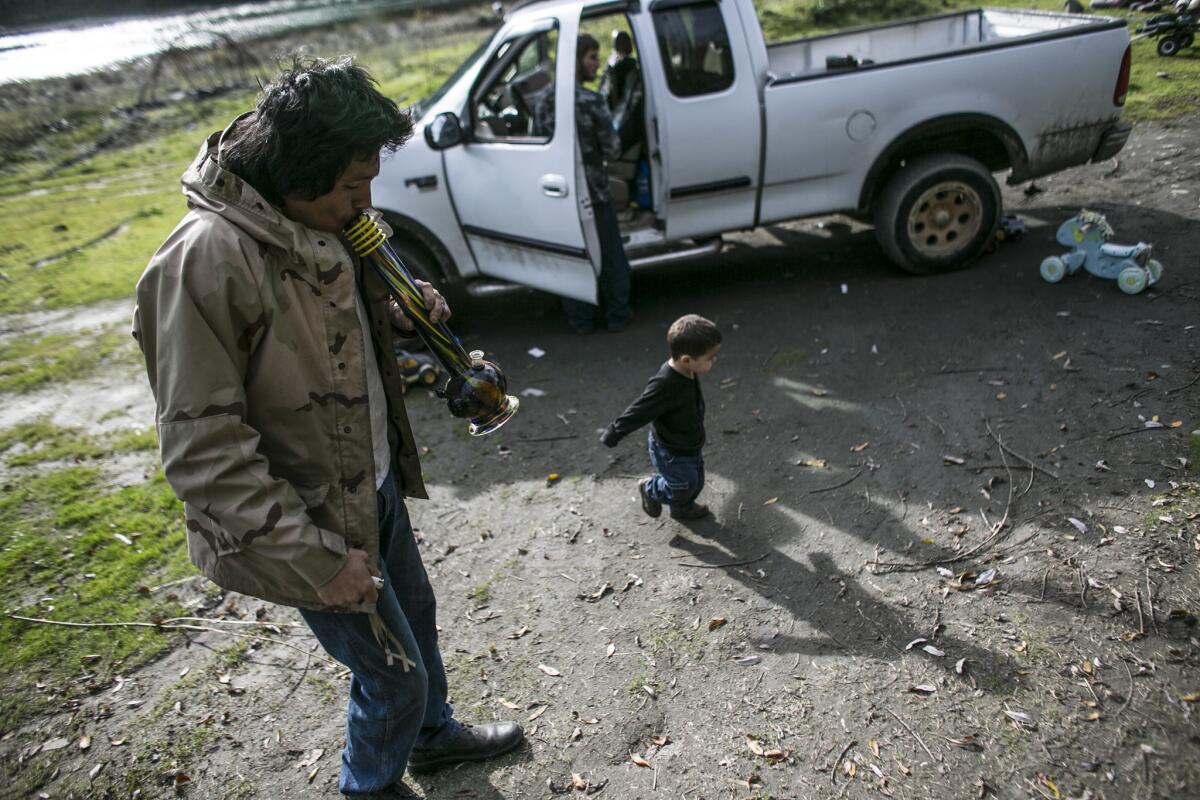
By the turn of that century, the Yurok were nearly decimated, living in a sliver of their old territory, one mile on each side of the Klamath River from Weitchpec to the ocean.
To force them to assimilate, the federal government began sending Yurok children to faraway boarding schools, forbidding them to speak their language or wear native clothes. But the Yurok people’s ability to live off the fish kept them rooted to this land. Many children returned as adults, and the tribe began growing back from the edge of extinction.
By the 1970s, the dams built hundreds of miles upstream had begun taking a toll on the river. The spring salmon run, traditionally the biggest of the year, fell into sharp decline. Toxic algae blooms thrived in water that was too shallow and warm.
Myers’ grandmother’s story was coming true.
The Indians began to depend on government food subsidies, and, for the first time, they began to suffer from diabetes and heart disease.
Drought sparked a water war in 2001, between the Indians along the river and farmers in Oregon who relied on upper Klamath water for irrigation. The U.S. Bureau of Reclamation starved the farms the first year, but after a political backlash, gave them their water the next year, reducing the flow down the river.
The Yurok watched tens of thousands of pallid gray corpses of fish wash up on the bars and float by in rafts of algae.
Myers joined activists demanding that the federal government release more water and set their sights on a new goal: The dams had to go.
They set off to Portland to meet with PacifiCorp, the large electric power company that operated the dam, hoping to get an agreement to build fishways — water channels that bypass the dams — so the salmon could spawn in their historic territory. But they were rebuffed.
In 2004, they flew to Scotland to protest at the headquarters of PacifiCorp’s corporate parent. For many it was their first time on an airplane.
When the company was sold to Warren Buffett’s Berkshire Hathaway two years later, the protesters converged on Omaha, hijacking the microphones at a shareholder meeting to keep the talk focused on the salmon. They came back the next year, and the next.
Their mission felt quixotic. Dams allowed the West to grow. No one was going to take them down for some Indians in the middle of nowhere.
The suicides hit hard, as they would in any small town.
Everyone knew everyone here. Residents stopped by each other’s homes to chat. They gave each other rides or picked up their groceries when they drove to the city. They listened to police scanners as if they broadcast the local news.
But the town of several hundred people felt alone in its grief.
The tribal headquarters and the bulk of the reservation population were 35 miles downstream, across a county line, in the towns of Klamath and Requa off U.S. 101.
No road connected the two ends of the reservation, so tribal members in Weitchpec had to take a two-hour drive over the mountains to reach headquarters. The tribal police patrolled the upper reservation only a few times a week, and never at night. The sheriff drove up from the coast for serious calls.
After Derek Howerton killed himself in August 2014, his five remaining brothers and their sister continued to live at the end of their muddy road. Before Derek’s death, he and his older brother Donald called themselves twins. They loved to race dirt bikes and play pranks. They snickered for months after Donald, skinning a small animal, invited an aghast DISH TV salesman “to stay for some squirrel.”
Derek had charm and a quick temper. Donald was calmer, tough as a Howerton needed to be, but more affectionate. They both had energy with nowhere to channel it.
When Derek was sentenced to community service tending to a garden by the tribal center, Donald had happily joined him. They took pride in their work, cleaning out the weeds and growing tomatoes, squash, cucumbers, melons, cabbage.
Donald took Derek’s death harder than anyone, and started drinking heavily. A few months later, their mom died of liver failure.
Around 7:15, on May 13, 2015, Donald asked his sister, April, if he could borrow her car. She said no, and they started arguing.
Donald pulled out a .357 revolver.
“You’re playing Russian roulette with my life!” he shouted.
He loaded a single round, put the barrel at his temple and pulled the trigger.
It clicked. She begged him to stop. It clicked again.
The third pull was fatal.
As a heritage preservation officer for the tribe, Myers’ job was to restore a sense of Yurok identity, bringing back the language, traditional sports, net fishing, dancing, plant gathering.
The string of deaths drove home how urgent that need for identity had become.
Since the days of the boarding schools, he said, Yurok people have been pulled in two directions. Many wanted to stay on their land, but they felt pressure to be successful in the “outside world.”
For years, a logging boom eased this quandary. Timber companies valued the Yurok for their skills in the forest and paid them well. His grandfather made so much money fixing roads that he drove a Corvette.
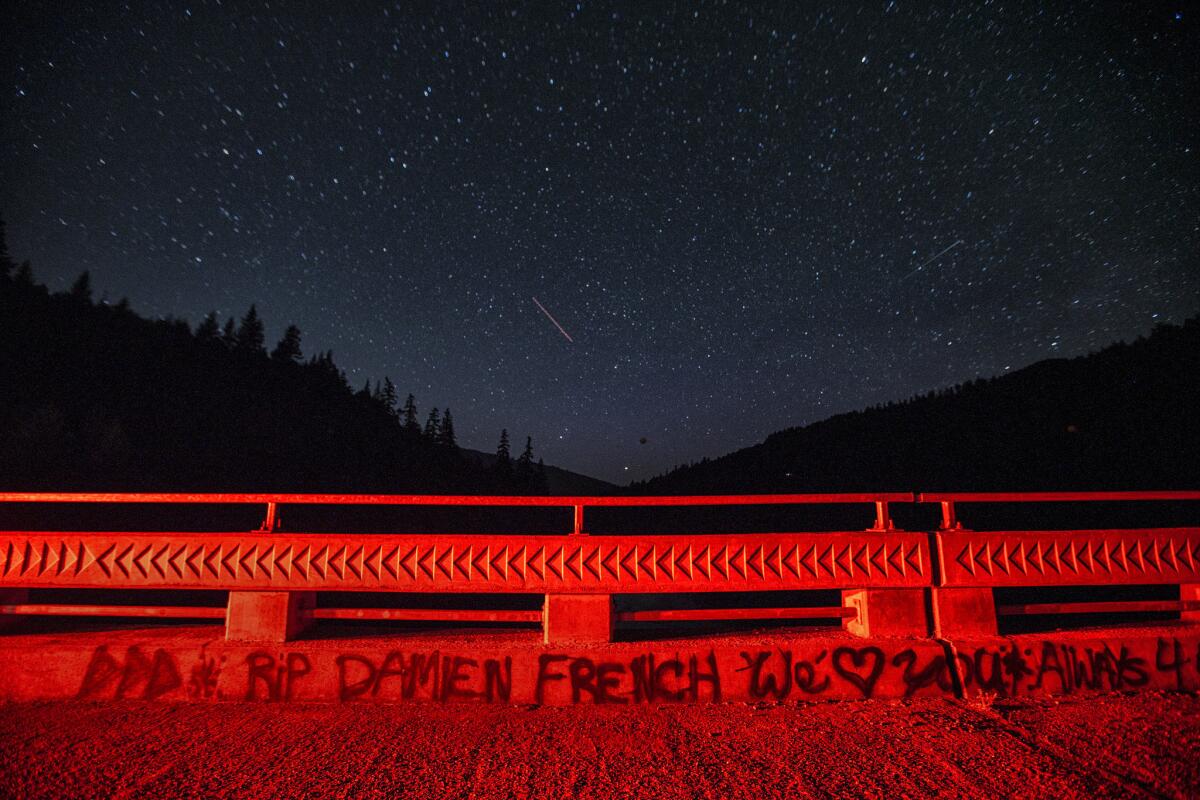
But when that industry started to collapse in the 1970s, many young people left for Eureka or Crescent City and beyond. Some found success, but many came back.
Myers and his wife, Molli, worried about their five children: They knew that even attentive parents had lost kids to hopelessness on the reservation.
To keep theirs engaged, the couple raced along the twisting roads in their Lincoln minivan, ferrying the kids to pickup games, matches and three different schools. They also dragged them to protests and government meetings where the couple spoke, to show their children that the Yurok needed to fight for their people.
They camped on the rocky bars in summer, teaching the kids the secrets of their home: How you can tell the chum salmon are lurking when the buzzards fly south, and how sturgeons come when the dogwoods bloom.
They believed that if parents stopped teaching those things — as many already had — a sense of what it meant to be Yurok would be lost, maybe for good.
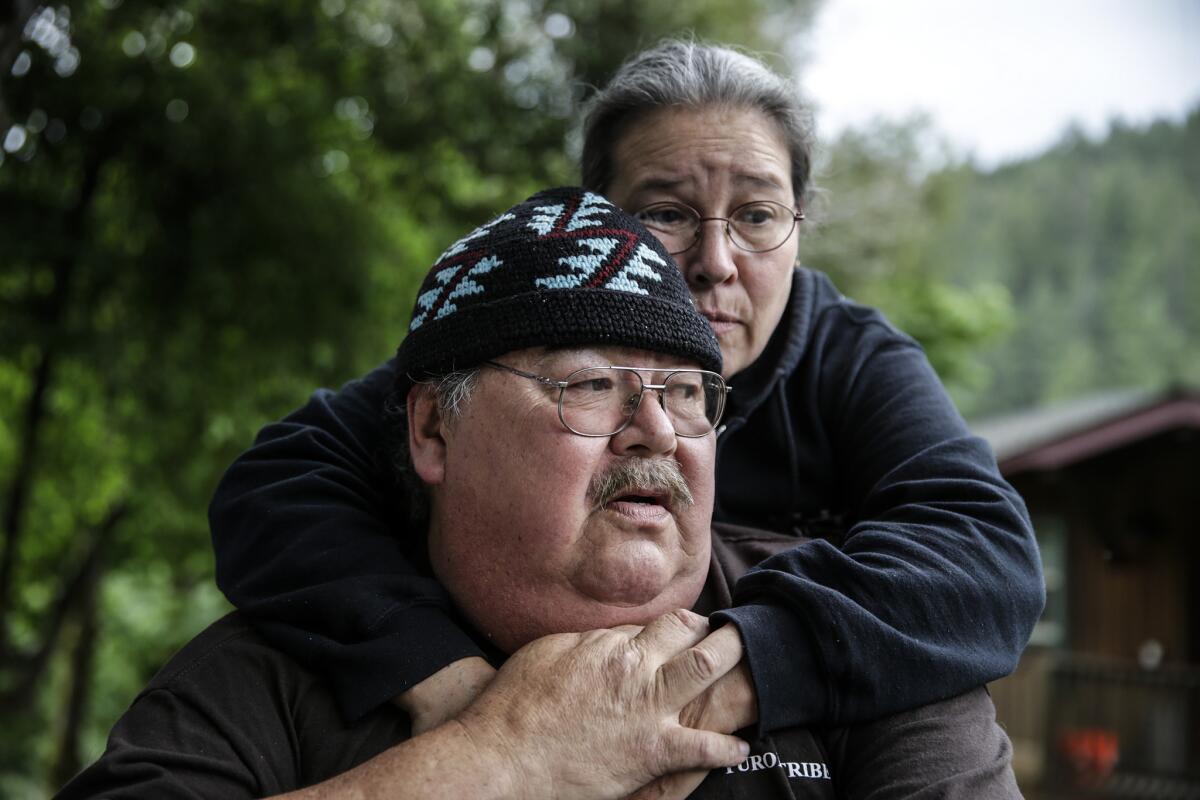
Dan French was the first to speak out about the suicides.
He had gotten the stunning news of his son’s death on the police scanner in his kitchen, nine days after the last suicide. His son had just been to his house, seeming like he wanted to talk about something. But Dan didn’t push it, and Damien drove off.
French was wracked with guilt. He should have seen the signs. He holed up in his house, despondent. Then he grew angry. French felt that if these suicides had occurred down in Klamath or Requa, officials would have jumped to respond.
But the tribal government seemed unconcerned. They didn’t discuss it at council meetings or send social workers to visit the families.
In his 57 years, French had never bothered with tribal politics. Heavyset with bad knees and a mossy voice, he lumbered about with an armor of gruff detachment. Grief swelled in his face.
French hesitated to act until November, when a cousin just down the road took his life. Then he sat at his kitchen table and wrote a letter to the tribal council.
“The community of Weitchpec has had seven young adults commit suicide in the last eighteen months,” he wrote.
“There is a suicide epidemic going on among young people who feel they have no hope for the future. They love their home and most want to stay here, but the lack of training opportunities, jobs, or even recreational facilities, invites unhealthy behavior and feelings of despair.”
He made copies and posted them at Pierson’s grocery store and then gathered signatures. A mother and several aunts of the dead did the same. Within days they had over 200 signatures on the letter.
On Dec. 5, French walked into the tribal council meeting and read his letter.
“The people in this community need to feel like someone cares about what’s happening here.”
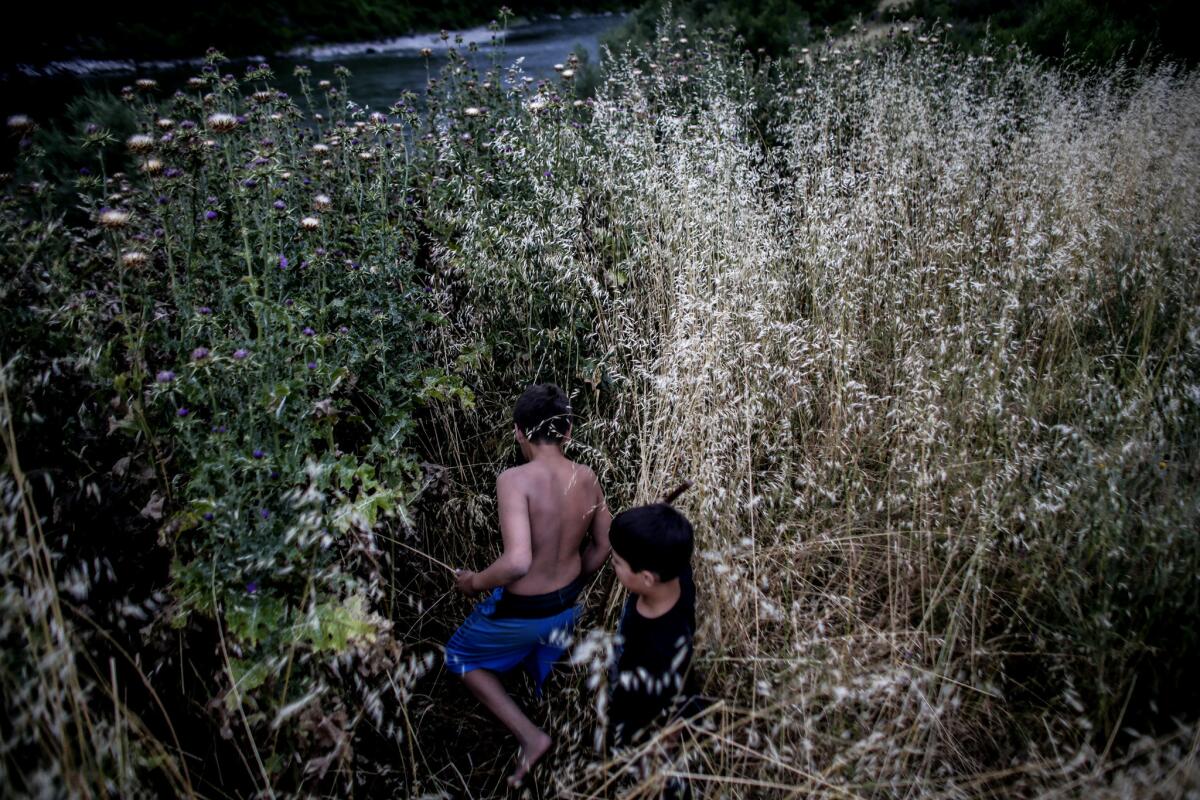
The tribal council members were taken aback at first. But they agreed to hold a special meeting in Weitchpec, where they declared a state of emergency, noting that the suicide rate there — the tribe’s “primary cultural hub” — was “hundreds of times that of other American Indians/Alaskan Natives.”
The Yurok reached out to the federal Indian Health Service, which offered $409,000 in funds to construct a new building for mental health services on the upper reservation. A local Indian health organization hired a full-time behavioral therapist to staff the clinic and visit schools.
The work was slow going. Few sought out therapy — a foreign concept in Indian culture — and it was hard to reach the people who most needed it. Young men were far more eager to get a construction job building the mental health center than to get counseling inside it.
But French’s letter had spawned a movement on the upper reservation. Families spoke openly about how their loved ones died. A march for solidarity drew 200 people — nearly the entire community.
Parents and teachers attended training sessions on suicide awareness and prevention. One woman organized a regular Friday night movie at the tribal center in Weitchpec.
Many felt drawn again to their ancient ways. They enrolled their children in workshops that taught them how to gather food and medicine, smoke salmon, build eel baskets. A group of men began meeting every week in a sweat lodge to discuss their problems.
Frankie Myers and his brother Richard formed a wrestling club for children. Wrestling is a Yurok warrior tradition and more than two dozen kids, some as young as 4, showed up to the first practices. Dads signed on to help coach. By the end of the season, the children were executing whizzers, reversals, sweep single-leg takedowns. They traveled to tournaments from Redding to Eureka, and mostly finished high in their weight classes.
The boys looked forward to applying those skills to the true warrior game — stick — which Meyers coached on a dusty river terrace in Weitchpec. Barefoot and shirtless, children used hazel sticks to fling a tossel — two hardwood pegs tied together — over the goal line.
Parents lined the field and sat on the beds of their pickups as they watched their little warriors tackle and wrestle in the dirt, bruised and exhilarated, sending ocher clouds into the evening light.
In January last year, a pickup truck pulled up to the Myers family’s remote house in a sideways sleet.
A trio of executives from PacifiCorp, the dam operator, stepped inside, ready to sign a new “treaty with the Indians,” as Myers put it.
Frankie and Molli were skeptical. They and their allies had fought this company from stalemate to success to frustrating reversal.
When federal regulators said the company would have to make costly improvements to let fish get around the dams, the utility executives started negotiating. They struck a complex deal that called for dam removal and river restoration — a stunning success for the tribe — only to see it expire.
Now, the execs told them, the states of Oregon and California had agreed to oversee the dam removal project.
Two months later, the Myers family drove up over the Bald Hills to the coastal village of Requa, named centuries ago after the river spirit, to see the deal sealed.
The day was unseasonably hot and still, the ocean glacier-blue. A couple of Yurok men with eel hooks scoured the beach looking for lamprey.
At two steel tables where fish were sold during commercial seasons, California Gov. Jerry Brown, Oregon Gov. Kate Brown and U.S. Interior Secretary Sally Jewell signed the agreement for the dams to come down in 2020.
Molli cried, happy but also sad, for the people who had died too early to see this day.
She and Frankie knew that it would take years to see results, and, in fact, the Chinook run last year would turn out to be the worst on record, with the federal government predicting a near total collapse for 2017.
But they had little doubt the river would be cleaner and the migrations would grow.
Gov. Jerry Brown put the removal project in blunt terms: “This is a good exercise of humankind correcting some of the mistakes it made in the past.”
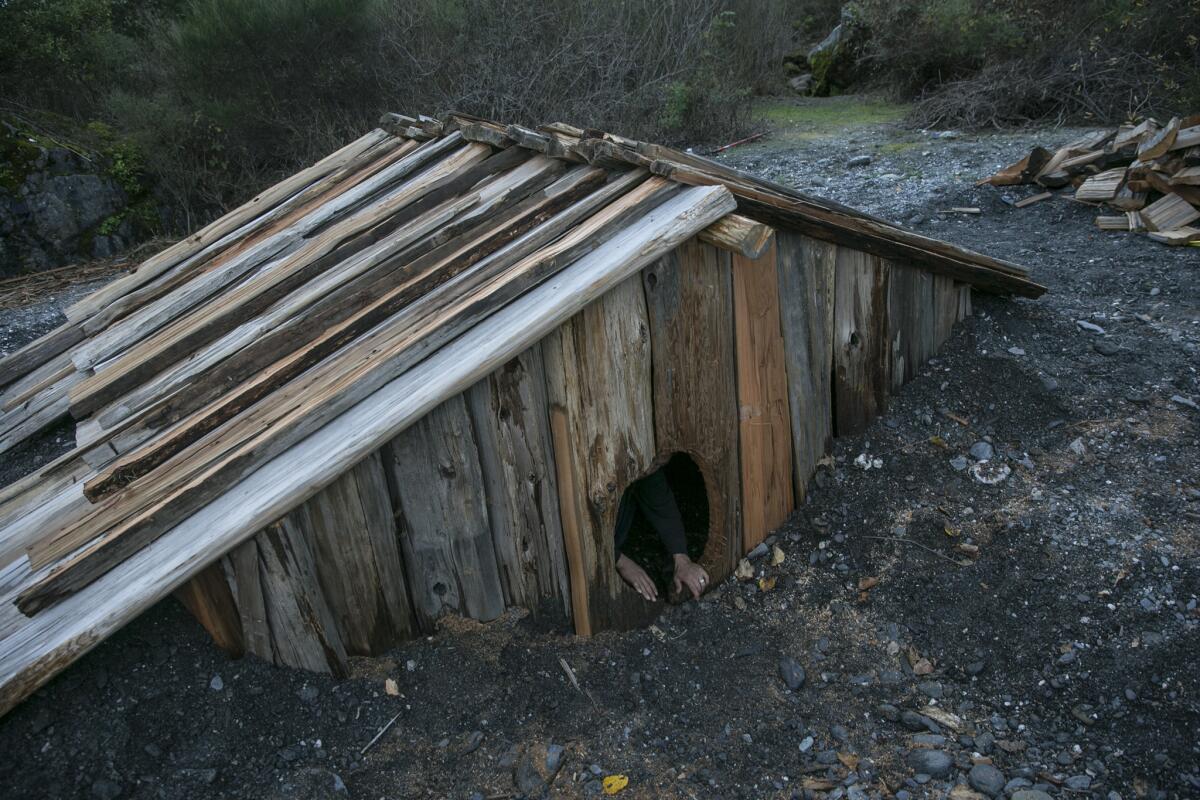
That spring brought small shoots of possibility. It had been almost six months since the last suicide.
Myers decided his part of the upper reservation needed a traditional sweat house, where men and boys opened up about their lives — a place where someone pondering suicide might reach out for help.
One Sunday morning, Myers, a couple of dads and the boys on the wrestling team picked through a pile of old timber overgrown with blackberry bramble. The wrestlers grabbed redwood boards, loaded them into a pickup and hauled the wood to a bluff along Tulley Creek.
The sun was bright, the leaves translucent and swimming in the breeze. The forest sputtered and buzzed with insects.
After unloading the wood, the boys were free to roam, no cell phones, no parents telling them what to do. They walked down a trail to check an eel basket they had set in a river hole the day before.
The river flowed fast and green, breaking off a white rock. They grabbed a rope tied to a stake on shore, and dragged in the heavy wire basket.
“We got one!” said Trayce, a 13-year-old who lived next door to the little yellow house where two men killed themselves.
But it was just a little sculpin. The lamprey eels had already passed, moving farther upstream to spawn.
The boys threw some rocks, then turned to wrestling, trying to dunk each other in the cold water.
When they finally grew tired, they sat in the warm sand, catching their breath by their ancestors’ fishing hole, watching the river go by.
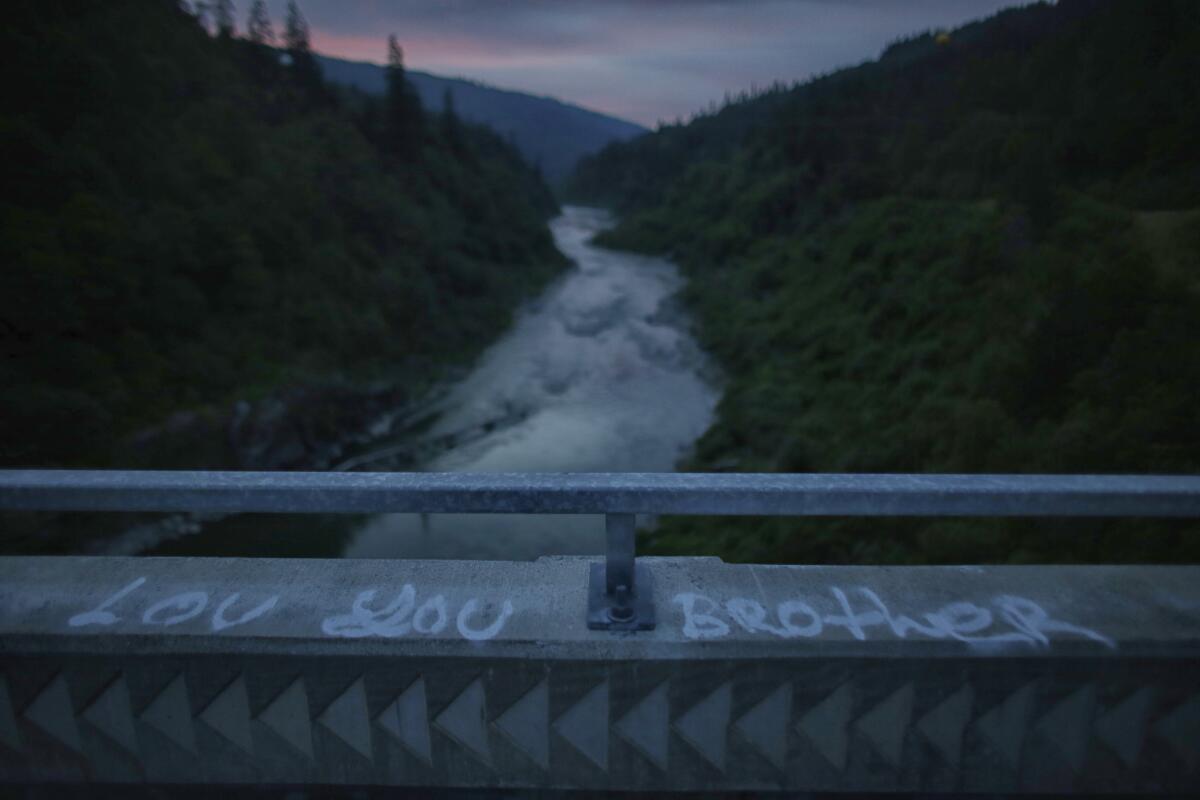
Lead photo: Loren Twofeathers Offield pauses while coaching the Yurok tribe's stick team.
Sign up for Essential California
The most important California stories and recommendations in your inbox every morning.
You may occasionally receive promotional content from the Los Angeles Times.








